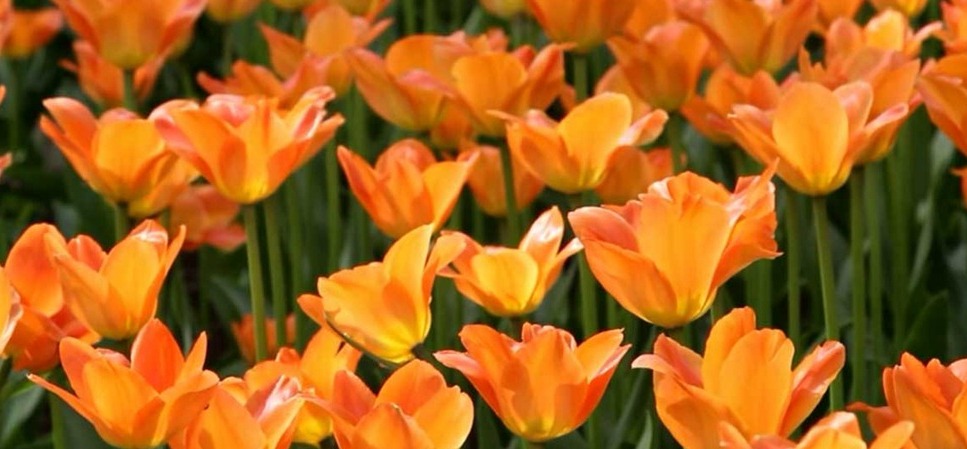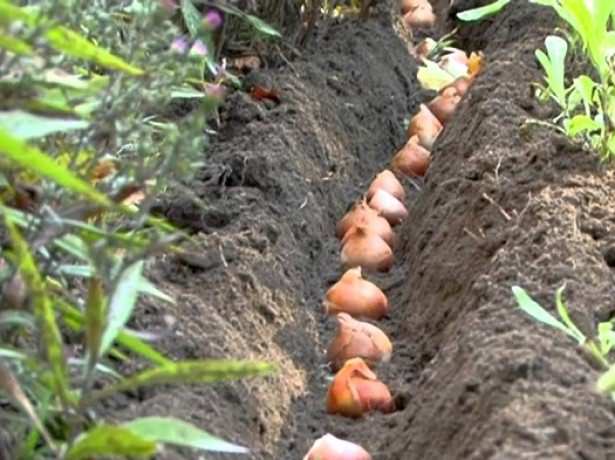Content:
Tulips are perhaps the most common bulbous perennial plants growing in domestic backyards and summer cottages. This is due to its excellent decorative properties and relative unpretentiousness in growing. An integral part of the agrotechnical rules of care is the regular replanting of plants. How to transplant tulips correctly is the topic of today's article.
Transplanting tulips: the need for a procedure
As a rule, subject to all the rules of agricultural technology, tulips grow in one place for approximately 3-4 years, after which it is imperative to transplant a perennial plant to a new site, as well as to make a parallel separation from the main tuber (bulb) of the children.
Signs indicating that it is time to replant tulips:
- Complete cessation of flowering or lack of splendor;
- Flowering occurs on time, but all tulip fragments have a deformed shape (buds, leaves, inflorescences). The most common problem is excessive acidity of the soil, violation of its chemical composition, damage to tubers by parasites and violation of planting rules;
- Formation of overly thickened plantings or active growth of tulips. Perennial plants simply become cramped in one flower bed;
- The need to urgently propagate tulips as soon as possible;
- Preventive measures, the main task of which is to prevent the development of diseases or pests;
- Plants are susceptible to diseases.
When is the best time to transplant tulips
Planting dates depend on various factors, for example, weather and climatic conditions, the state of perennials and the individual characteristics of the varietal variety. Fortunately, there are general guidelines for when to transplant tulips outdoors.
Many agronomists, especially beginners, are concerned about when tulips can be transplanted from one place to another. The optimal time for this procedure is autumn, the period from the second or third decade of September to the end of the second decade of October. In this case, the plant has a sufficient time gap for rooting and adaptation on a new land plot. Using this transplanting time, tulips begin to bloom in spring without any delay.
Regardless of the above terms, there are periods during which a transplant is not allowed.
- This culture does not tolerate a transplant during flowering very well. If you neglect this rule, the perennial can begin to wither and eventually disappear;
- Transplanting shortly before flowering is an undesirable measure. It is recommended to wait until the tulips have already faded;
- Transplanting on the eve of the first frost is highly undesirable.Otherwise, the plants will not have the opportunity to take root and adapt in a new place, this will inevitably lead to their death.
Now, we will talk about the periods during which the transplant, on the contrary, is recommended:
- About a month before the first snowfall;
- When the soil temperature is approximately + 8-10 degrees at a depth of 10 cm;
- In the middle lane, the transplant is carried out until mid-October;
- The plant has faded and the green leaves have already begun to turn yellow;
- In the northern regions, it is recommended to transplant before the end of September, due mainly to the early onset of winter.
How to transplant tulips
How to transplant tulips in the summer? How to plant tulips in the fall? These and many other questions concern flower growers, because the life and development of a plant depends on the correct transplantation.
Detailed algorithm for transplanting tulips:
- It is necessary to start preparing the soil in the middle of summer, at which time it is recommended to dig up the bulbs. It is strongly not recommended to postpone this process, otherwise the bulbs can begin to take root, which negatively affect the state of the plant if disturbed.
- The dug up tubers must be washed under running water and then treated with a disinfectant, for example, a weak manganese solution. Then dry and store in a dry, well-ventilated area. Drafts have a detrimental effect on the bulbs, they should not be. The optimum temperature for storing planting material is + 20-24 degrees. Air humidity is also of great importance, its values should be approximately 70%.
- After, from the prepared planting material, it is necessary to remove the old root processes and scales. This must be done carefully so that no mechanical damage is left on the surface of the bulb. It is imperative to inspect the bulbs for damage and disease and pests. Affected bulbs are disposed of.
- Immediately before planting, the bulbs are again treated with a disinfectant solution, for example, a weak manganese solution or garlic infusion.
- In the prepared area on the flowerbed, planting pits are made, the diameter and size depend on the size of the tuber. Large bulbs must be deepened by 10-15 cm, and for children by 5-7 cm.
- The optimal distance between the holes should be approximately 8-10 cm, if you neglect this rule, the tulips will simply be cramped, and you will not be able to contemplate lush flowering.
- Immediately before planting, the soil must be well moistened. You can start planting only after the moisture has been absorbed into the soil.
- Tulip bulbs are lowered into the holes, after which they are sprinkled with fertile soil.
- After planting, the soil is carefully tamped and again watered abundantly with warm water.
- The entire area is leveled using a rake. After that, the plants must be properly cared for.
Further care of the plant
Tulip care does not have any specific requirements. The first shoots must be regularly watered and carefully loosened (thanks to this, the root system is properly saturated with oxygen and nutrients), it will be useful to add mineral, organic fertilizers. During the growing season of tulips, it is recommended to carry out three dressings: the first - after the first shoots appear, the second soon after the formation of buds and the third after the cessation of flowering.
Tulips are attractive, bright and unpretentious perennial flowering plants that even a novice agronomist can grow in their flower beds.














